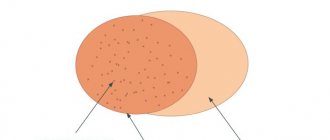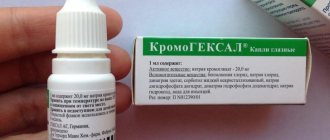Causes of occurrence and development of pyelonephritis
Kidney inflammation occurs when a lower urinary tract infection spreads upward through the urethra to the bladder and from there along the ureters to the kidneys.
The main cause of pyelonephritis is infection in combination with impaired urine flow. Any problem that interferes with the normal flow of urine increases the risk of acute pyelonephritis. For example, urinary tracts that are unusual in size or shape are more likely to lead to acute pyelonephritis.
Also, local hypothermia of the lumbar region can cause the development of pyelonephritis, even in the absence of anatomical features and with normal urine outflow.
Can the temperature rise?
To understand whether pyelonephritis is accompanied by temperature and why it rises, you need to know the etiology of the disease. The cause of inflammation in most cases is bacteria that affect the interstitial renal tissue, calyces and pelvis, and the mouth of the ureter.
The infection either enters the bladder and rises to the kidneys through the ureters, or is carried by blood and lymph, reaching the kidneys. The causative agents of the disease are:
- Pseudomonas aeruginosa;
- enterococcus;
- staphylococcus;
- enterobacter;
- pseudomonas;
- Klebsiella etc.
Regardless of how the infectious agent penetrates the tissues of the kidneys and ureters, it actively multiplies and thereby provokes inflammation. This disrupts urinary and excretory function and causes a reaction from the immune system. That is why, with pyelonephritis, the body temperature reaches 37 ° C before the acute phase begins. This is a sign that the bacteria are gradually moving towards the kidneys, multiplying along the way, and the immune system already detects their presence.
Symptoms of pyelonephritis
The disease can have a different clinical picture, the pathology can affect one or both kidneys, and be acute or chronic.
Acute pyelonephritis
The acute form occurs with pronounced symptoms, including:
- heat;
- pain in the abdomen, back, side or groin;
- painful urination;
- cloudy urine;
- pus or blood in the urine;
- frequent urination;
- trembling, chills;
- nausea, vomiting.
Chronic pyelonephritis
Patients with the chronic form of the disease may experience only mild symptoms or no symptoms at all.
Chronic pyelonephritis is more common in people with urinary tract obstruction. It can be caused by infections, vesicoureteral reflux, or anatomical abnormalities. Chronic pyelonephritis is more common in children than in adults.
Who's at risk
High-risk groups include:
- patients with kidney stones or other kidney or bladder diseases;
- aged people;
- people with a suppressed immune system (for example, diabetes, HIV/AIDS or cancer, taking hormonal medications);
- patients with vesicoureteral reflux (a condition in which small amounts of urine return from the bladder into the ureters and kidneys);
- men with prostate diseases;
- people who tend to wait a long time before going to the toilet due to psychological characteristics or profession;
- people with urinary incontinence - when, for various reasons, the muscles that hold the contents of the bladder inside weaken, and when coughing, sneezing, or laughing, a small amount of urine may be released involuntarily.
There are a number of factors that make the body more vulnerable to infection, such as the use of a catheter or surgery in the urinary tract.
Despite the fact that people of any gender and age group can experience the disease, most often they suffer from it:
- Children under seven years old - due to the peculiarities of anatomical development.
- Young women. Several factors can provoke pathology: the onset of sexual activity, pregnancy, childbirth.
- Men with prostate adenoma.
Diagnosis of pyelonephritis
- Initial consultation with a doctor and general examination. The doctor will check for fever, tenderness in the abdomen and lower back, and other general symptoms.
- Analyzes. The first and most important is a general urine test. A complete blood count is usually necessary. It is also often advisable to culture urine to determine the type of pathogen and its sensitivity to drugs.
- The doctor may also order an ultrasound to look for cysts, tumors or other obstructions in the urinary tract, a blood test for creatinine and urea, uric acid, and a biochemical urine test.
Is it possible to lower the temperature and how to do it?
In acute pyelonephritis, you can take medications for fever, but this is a short-term solution to the problem. Until the source of infection or reflux is eliminated, the temperature in acute pyelonephritis will not completely go away.
In the chronic form of pyelonephritis, the temperature does not reach such levels as to require the use of analgesics or anti-inflammatory drugs. Therefore, taking medications is not advisable. It is better to consult a doctor and undergo extensive diagnostics to determine the pathogen.
In acute pyelonephritis, the doctor prescribes antibacterial drugs if the cause is infection. In case of reflux, when urine is thrown back into the kidneys, surgery is indicated. In parallel with antibiotics, the urologist can prescribe medications that will help reduce the temperature during pyelonephritis:
- Paracetamol.
- Efferalgan.
- Panadol.
- Nurofen.
- Ibuprom.
- Theraflu.
- Flukold.
- Nimesulide et al.
Using antipyretics, you can lower your temperature only for 1-2 days. Such drugs should not be taken for more than 3-5 days without consulting a doctor, and acute pyelonephritis requires treatment in a hospital. Therefore, it is advisable to take the drugs only 1 or 2 times, and this is even if the exacerbation began at night and it is not possible to immediately go to the hospital.
Treatment of pyelonephritis
Antibiotics are the first remedy against acute pyelonephritis.
The antibiotic is selected only by a doctor based on the results of an analysis of the type of bacteria and its sensitivity to drugs. In acute cases, if it is not possible to wait for test results, a broad-spectrum antibiotic is used. Although with proper treatment, symptoms may subside within 2-3 days, the course of antibiotics must be completed to the end, as recommended by the doctor (usually treatment lasts from 10 to 14 days). If the course of therapy is interrupted prematurely, the pathogen may develop resistance to the antibiotic - this will complicate further treatment and increase the risk of chronic pyelonephritis.
Treatment of chronic pyelonephritis is possible. It is carried out according to the principles of treatment of acute pyelonephritis, only it requires more time and effort. Treatment involves eliminating the cause that led to stagnation of urine, restoring renal circulation, destroying pathogenic bacteria using antibiotic therapy, and strengthening the general immune system. Even if sustained remission is achieved, maintenance intermittent antibiotic therapy may be required. Treatment of a chronic disease is a serious challenge for doctors and a long journey for the patient, which is why it is so important to consult a doctor promptly at the first symptoms of illness and not waste precious time on self-medication.
Without proper treatment, acute pyelonephritis becomes chronic. If the infection continues to spread, the kidneys may be permanently damaged. In rare advanced cases, the infection can enter the bloodstream. The consequences of this can be extremely serious, including sepsis and bacterial shock.
How long does the temperature last?
How long does the temperature last in adults with pyelonephritis? This depends on several factors. Among them:
- the cause of the disease, in case of infectious etiology - the type of infection;
- localization of infection propagation: pelvis, calyces, ureteral funnel, ureters themselves, etc.;
- state of the immune system;
- the presence of concomitant pathologies.
In most cases, it does not go away on its own and lasts until the cause - the source of inflammation - is eliminated. To eliminate it, the doctor determines whether the outbreak is caused by infection or reflux, and then prescribes a treatment regimen. The immune system also works to reduce the temperature, but may not be able to cope with the pathogen on its own.
Temperature in acute form of pyelonephritis
The acute phase of pyelonephritis lasts up to 5 days and is accompanied by a vivid clinical picture. But the symptoms are nonspecific and similar to many other inflammations of the abdominal organs, so only a urologist can immediately diagnose the cause. During this period, the temperature rises to 38 °C and higher, and the entire kidney parenchyma can be involved in active inflammation. Read more about acute pyelonephritis→
The appearance of small ulcers is not only dangerous due to the development of a carbuncle, but also due to the further movement of the infection through the lymph flow and blood poisoning. In these cases, the temperature continues to remain at high levels for a long time. Additionally, general symptoms of inflammation are observed.
Temperature in chronic form of pyelonephritis
With such pyelonephritis, diagnosing the cause is most difficult. The daily temperature can remain at 36.8-37.4 ° C for a whole month. Another option is a periodic increase in temperature to 37.5 ° C, especially in the evening. This malaise is noted by patients 1-2 times a week and is attributed to a cold or fatigue. Read more about chronic pyelonephritis→
The infection does not provoke active and extensive foci of inflammation, partially involving the parenchyma in a sluggish inflammatory process. Sometimes pain or discomfort is felt above the lower back. Under the influence of external factors, against the background of a cold, hypothermia, flu, pyelonephritis passes into the acute phase.
Pyelonephritis in pregnant women
Pregnancy causes many transformations in the body, including physiological changes in the urinary tract.
Elevated levels of progesterone (a hormone that supports normal pregnancy) and increased pressure on the ureters increase the risk of pyelonephritis. Pyelonephritis in pregnant women may require hospitalization if this condition threatens the life of both mother and child. Also, untreated kidney infections in pregnant women increase the risk of premature birth, placental abruption, intrauterine infection of the fetus and damage to its nervous system. With proper and timely treatment, all these consequences can be avoided, childbirth occurs on time, and the prognosis is favorable for both the woman and the child.
During pregnancy, it is extremely important to understand whether this is the first case of the disease in a woman’s history, or whether the disease was chronic in nature, and an exacerbation occurred during pregnancy. Statistics show that primary kidney inflammation in pregnant women is treated successfully and without complications.
To prevent pyelonephritis in pregnant women, it is necessary to be tested for infections when planning pregnancy. Urine cultures are also performed at the beginning of the second trimester. Early detection of UTIs can prevent kidney infections.
The following will also help prevent problems:
- Moderate physical activity, walks in the fresh air, gymnastics for pregnant women. The goal is to strengthen muscles and improve the tone of internal organs, improve blood flow.
- Compliance with drinking regime. Pregnant women should consult their primary care physician.
- Empty the bladder at least every 3-4 hours to prevent congestion.
- Following a special diet that promotes the flow of urine (if there was kidney inflammation before pregnancy).
Pyelonephritis
Nephrologist, hospital №8 Ganina M.B.
Pyelonephritis is the most common kidney disease in all age groups.
There are differences in the incidence of pyelonephritis in men and women at different age periods.
In general, women predominate among patients with pyelonephritis.
At the age of 2 to 15 years, girls suffer from pyelonephritis 6 times more often than boys; almost the same ratio is observed between men and women in young and middle age. In old age, pyelonephritis occurs more often in men. These differences are associated with impaired urodynamics and urinary tract infections at different ages in representatives of different sexes.
Pyelonephritis can be an independent disease, but more often it complicates the course of various diseases (urolithiasis, prostate adenoma, diseases of the female genital organs, tumors of the genitourinary system, diabetes mellitus) or occurs as a postoperative complication.
Uncomplicated kidney infections occur in the absence of structural changes in patients without serious concomitant diseases; they are usually observed in outpatient practice.
Complicated infections occur in patients with various obstructive uropathy, against the background of bladder catheterization, as well as in patients with concomitant pathologies (diabetes mellitus, congestive heart failure, immunosuppressive therapy, etc.). In elderly patients, complicated infections are common.
A special place is occupied by senile pyelonephritis - the main problem of the geriatric nephrology clinic. Its frequency increases with each decade of an older person’s life, reaching 45% in men and 40% in women in the tenth decade.
1 CONCEPT OF PYELONEPHRITIS
Pyelonephritis (pyelonephritis; Greek pyelos pelvis + nephritis) is a nonspecific infectious and inflammatory disease of the kidneys with predominant damage to the interstitial tissue, pelvis and calyces.
There are acute and chronic, unilateral and bilateral, primary (non-obstructive) and secondary (obstructive) pyelonephritis. More often, in approximately 80% of cases, secondary pyelonephritis is observed, resulting from organic or functional changes in the kidneys and urinary tract, which lead to impaired outflow of urine, venous blood and lymph from the kidney. In the development of secondary pyelonephritis. in children, congenital dysplastic foci in the renal tissue and micro-obstruction (difficulty in the outflow of urine) at the level of the nephron are of great importance; in pregnant women (the so-called gestational pyelonephritis) - a violation of the tone of the upper urinary tract due to endocrine changes or compression of the lower third of the ureter by an enlarged uterus. There are also clinical variants of pyelonephritis in various types of pathology, including pyelonephritis in patients with diabetes mellitus, in patients with spinal cord damage, pyelonephritis with vesicoureteral reflux, pyelonephritis of a kidney transplant, senile (senile) pyelonephritis.
The cause of the disease can be any microorganisms belonging to both endogenous and exogenous flora. White and golden plasma-coagulating staphylococci can cause a purulent-inflammatory process in an unchanged kidney, while other microorganisms, as a rule, cause pyelonephritis only in the presence of predisposing local factors.
Typically, microorganisms penetrate the kidney hematogenously from a source of infection in the body (tonsillitis, furunculosis, infected wound, etc.). They, as a rule, linger in the venous capillaries of the kidney, from where they spread to the interstitial tissue, causing the development of a purulent-inflammatory process in it. Less commonly, infectious agents enter the kidney through the urinogenic route, i.e. from the lower urinary tract through the lumen of the ureter as a result of vesicoureteral reflux. From the renal pelvis, microorganisms penetrate into the general bloodstream due to pelvic-renal reflux and then, returning through the arterial system to the same kidney, cause an inflammatory process in it. Very rarely, pathogens from the lower urinary tract reach the kidney, moving directly along the walls of the ureter.
The development of bacterial inflammation in the interstitial tissue of the kidney is promoted by hypoxia of the renal tissue (hypertension, nephroptosis, kidney hypoplasia, polycystic disease), hypokalemia, disorders of purine (gout) and carbohydrate (diabetes mellitus) metabolism, urodynamics (urolithiasis, vesicoureteral reflux, developmental anomalies urinary system, prostate adenoma, intestinal atony, pregnancy), immunodeficiency states.
The chronic course of pyelonephritis is usually caused by urinogenic introduction of bacteria due to impaired outflow of urine from the kidney, suppressed immunity, impaired blood supply to the kidney tissue and other factors. Most often it is observed in obstructive (30-40%), as well as gestational pyelonephritis (10-25%).
2 TREATMENT
A patient with acute pyelonephritis should be hospitalized. He needs to be provided with bed rest and comprehensive treatment, taking into account the stage of the inflammatory process, the degree of disturbance of urine passage, and the functional state of the second kidney. Antibacterial therapy in the absence of urine outflow from the affected kidney is not only ineffective, but also dangerous due to the possibility of endotoxic shock. Therefore, if urine passage is impaired in patients with acute serous pyelonephritis, the outflow of urine from the renal pelvis should first be restored by catheterization of the ureter. installation of a stent (tube), percutaneous puncture nephrostomy or surgical removal of the obstruction (pyelostomy or nephrostomy).
In acute purulent pyelonephritis, restoration of urine passage is not enough. Therefore, with apostematous pyelonephritis, the kidney is simultaneously decapsulated; with a kidney carbuncle - its excision or dissection; in case of an abscess - opening and draining the purulent cavity. In case of severe intoxication and septic condition caused by diffuse apostematous pyelonephritis, multiple kidney carbuncles, and if the condition of the second kidney is satisfactory, nephrectomy is indicated.
When choosing an antibiotic, it is necessary to take into account the reaction of urine, the nephrotoxicity of the drug, and the characteristics of the infectious agent. Thus, macrolides and aminoglycoside antibiotics are effective in alkaline urine; ampicillin, ristomycin sulfate, nitrofurans, nitropsoline - in weak acid: chloramphenicol, tetracyclines, cephalosporins, palin, tarivid (ofloxacin) can be used at any urine pH. Antibacterial therapy in case of a severe attack of acute pyelonephritis is usually started without waiting for data from a bacteriological examination of urine. If it is impossible to determine the urine pH, drugs that are effective for any urine reaction are prescribed (chloramphenicol in combination with furagin, ampicillin, cephalexin, palin). If there is no effect, antibiotics are administered parenterally. A strong bactericidal effect is obtained by combining semisynthetic penicillins with nitrofurans, carbenicillin with nalidixic acid, and aminoglycosides with cephalosporins. Antibacterial therapy is adjusted based on the results of bacteriological examination of urine.
It is recommended to drink plenty of fluids (up to 21/2 liters per day), taking into account the state of the cardiovascular system, kidney function and urine outflow from the upper urinary tract. Feverish patients should be given cranberry juice to drink, and in severe cases with severe intoxication, subcutaneous or intravenous infusions of isotonic sodium chloride solution or 5% glucose solution should be prescribed. Reopolyglucin, hemodez (neocompensan), 10% albumin solution are used intravenously, as well as transfusions of plasma, blood, anti-staphylococcal or anti-colibacillary plasma, blood plasma exposed to UV irradiation, and gamma globulin is administered.
Diuretics are used - furosemide (Lasix) orally, intramuscularly or intravenously. For renal acidosis, parenteral administration of a 2-3% sodium bicarbonate solution is recommended. In severe cases, with severe intoxication and sepsis, hemosorption, lymphosorption, and plasmapheresis are used.
Of the anti-inflammatory drugs, proteolysis inhibitors are prescribed in the first 8-9 days - aminocaproic acid 1 g 5-6 times a day or contrikal daily once 10,000-20,000 units intravenously in 300-500 ml of isotonic sodium chloride solution. Salicylates (acetylsalicylic acid), non-steroidal anti-inflammatory drugs (antipyrine, analgin, amidopyrine, brufen, indomethacin), antihistamines (diphenhydramine, suprastin, tavegil) can be used as antipyretics. In some cases (with bacteremic shock), steroid hormones (hydrocortisone, prednisolone) and anticoagulants are used.
In order to stabilize the permeability of cell membranes and capillaries, ascorbic acid is prescribed (intramuscular 3-5 ml of a 5% solution), rutin 0.05 g 2-3 times a day. To improve microcirculation, pentoxifylline (trental) is used. In case of hypoxia, oxygen inhalation, subcutaneous administration or hyperbaric oxygenation are indicated.
Food should be sufficiently high in calories, not plentiful, without sharply limiting the intake of table salt. We can recommend diet No. 7a, containing 20 g of protein, 80 g of fat and 350 g of carbohydrates, which provides 2200 kcal.
For pain in the kidney, thermal procedures (heating pads, warming compresses, sollux, diathermy), antispasmodics (belladonna extract, papaverine, no-spa, baralgin) are indicated. From the 14th to 16th day of illness, anabolic steroids are used to stimulate protein synthesis in the body - methandrostenolone (Nerobol); phenobolin (nerobolil) or retabolil. Biogenic stimulants are also used, which have a stimulating effect and accelerate regeneration processes, incl. preparations from plants (aloe extract, Eleutherococcus, Leuzea, ginseng), from animal tissues (placental suspension, vitreous body, apilak, pantocrine), as well as from estuary mud (PhiBS, peloidin, humisol, etc.) and peat (peat). Vitamins A, B1 and B6, herbal medicine, physiotherapy (electrophoresis with potassium iodide, phonophoresis with hydrocortisone, microwave therapy) are prescribed.
A patient with acute pyelonephritis is unable to work during the febrile period and 7-10 days after normalization of body temperature; limited ability to work until urine and blood tests are completely normal. After surgery on the kidney, pelvis, or ureter, disability continues for 3-4 weeks after the wound has healed (up to 11/2 months in total). In cases of renal failure or primary organic disease of the urinary tract, which is complicated by repeated exacerbations of P., the patient is also disabled.
Outpatient treatment of patients with acute pyelonephritis in the rehabilitation stage lasts 4-6 months. Prescribe intermittent courses of antibacterial therapy for approximately 1 week of each month under the supervision of an antibiogram.
Sanatorium-resort treatment is carried out at the resorts of Truskavets, Zheleznovodsk, Pyatigorsk, Essentuki, Kislovodsk, Borjomi, Sairme, Yangantau, Birshtonas, Istisu, Berezovskie Mineralnye Vody, Shklo, Khmelnik, etc.
INFLUENCE OF PHYSICAL EXERCISE ON THE HUMAN BODY. THERAPEUTIC PHYSICAL ACTIVITY FOR PYELONEPHRITIS
HUMAN is a social being, representing the highest level of development of living organisms on Earth, possessing a complexly organized brain, consciousness and articulate speech. The essence of a person cannot be reduced to the features of his anatomical structure, for example, the vertical position of the body, the specific structure of the limbs and the complex organization of the brain. Man with all his specific characteristics is a product of socio-historical development. Moreover, it has not only its own social history, but also its own natural prehistory. The evolution of the anatomical and physiological structure of animals gradually prepared the possibility of a transition to the anatomical and physiological structure of humans. And the emergence of consciousness was prepared by the entire previous course of the natural history of the mental development of animals. The beginning of the manufacture of artificial tools marked the beginning of the emergence of man. And as a result of steadily developing labor activity, man not only modified nature, but also modified himself. Until he finally reached the modern type of structure over hundreds of years and turned into a new biological species called HomoSapiens (reasonable man).
Anatomical and physiological essay.
The human body, like all animals, has a cellular structure. The cells that form it have different structures according to the functions they perform and form various tissues (muscle, nervous, bone, internal environment, and others). Tissues make up organs and organ systems. Supportive and motor functions are carried out by the skeleton and muscles, combined into a single musculoskeletal system; nutrition - by the system of digestive organs, which includes the digestive tube and large digestive glands; breathing - the respiratory organs, consisting of the respiratory tract and lungs; excretion of metabolic end products (feces and urine) - by the excretory system (excretion organs), which include the kidneys, lungs and skin; reproduction of offspring - by the genital system; transfer of nutrients, respiratory gases, hormones, metabolic products - by the circulatory system and lymphatic system; The connection between tissues, organs and the whole organism with the external environment is carried out by the nervous system.
Civilization has made life so much easier for man that all his previously natural skills have acquired the character of something outstanding. The appearance of cars, trains and airplanes undoubtedly made it easier to travel, but they also took away the ability for humans to move naturally (to fly). More and more people are now fighting for a healthy lifestyle, because physical culture strengthens health, develops physical strength and motor abilities of a person. A wide variety of physical exercises used in the process of physical education allow a person to be in good physical shape and lead a healthy lifestyle. Sports such as running, skiing, skating, swimming, rowing not only develop muscles, but also strengthen the spine, which makes it possible to avoid many diseases in the future with a high degree of probability. You can engage in any sport only for the purposes of active recreation, entertainment and health promotion and not set yourself the goal of achieving high results and participating in competitions. Physical education can also be therapeutic, that is, it is used for therapeutic and preventive purposes. One of the features of physical therapy is the direct active participation of the patient himself in the process of his treatment; he himself performs the physical exercises prescribed by the doctor, and he himself controls the correctness of their implementation.
Physical therapy is used in various forms:
— hygienic gymnastics;
- physiotherapy;
- outdoor games;
- various forms of walking, sports entertainment.
Hygienic gymnastics is a set of physical exercises that has a general strengthening effect on the body.
Therapeutic gymnastics is a set of physical exercises prescribed to a patient for therapeutic and preventive purposes. Complexes are composed not only of special exercises in relation to a given disease, but also of exercises that have a general effect on the body. Depending on the disease, the content of therapeutic gymnastics complexes and the methods of their implementation are different.
Games as a form of physical therapy are characterized by a pronounced interest in actions: the presence of interest forces the player to make movements and
actions that he usually refuses, citing reluctance or pain.
Sports activities - walking, horseback riding, skiing, cycling and others (used mainly in holiday homes and sanatoriums) should be strictly dosed depending on the state of health, age, fitness, meteorological and other conditions in which they are carried out.
Contraindications to the use of physical therapy are:
1. General serious condition of the patient.
2. Danger of internal bleeding.
3. Unbearable pain when performing physical exercises.
Unfortunately, physical therapy is practically not used for diseases of the urinary organs. Only general restorative therapeutic exercises are used, since pyelonephritis (from the Greek pyelos - pelvis and nefros - kidney) is an inflammation of the renal pelvis, complicated by inflammation of the kidneys due to the penetration of inflammatory agents from the renal pelvis into the kidney tissue. Inflammation of the renal pelvis occurs as a result of the penetration of microbes into the cavity of the renal pelvis. The most common causative agents of pyelitis are Escherichia coli, staphylococci and streptococci.
The chronic course of the disease most often depends on the specific cause supporting the inflammatory phenomenon. Frequent pain in the lumbar region does not make it possible to engage in physical activity regularly and with full effort. The course of the disease is characterized by alternating periods of calm, when patients do not experience pain, with periods of exacerbation, which usually occur after an infection, as well as from vitamin deficiencies and colds.
And although physical therapy is a very effective and efficient means of combating diseases, it, unfortunately, does not give positive results (for pyelonephritis) other than a temporary improvement in general condition.
CONCLUSION
Pyelonephritis is inflammation of the kidney tissue. Pyelonephritis can affect a person of any age, but more often it affects: children under 7 years of age, in whom the disease is associated with anatomical developmental features; girls and women aged 18-30 years, in whom the appearance of pyelonephritis is associated with the onset of sexual activity, pregnancy or childbirth; elderly men suffering from prostate adenoma.
Pyelonephritis is an infectious inflammatory disease of the kidneys affecting the pelvis and calyces, parenchyma and interstitial tissue. In the acute phase of the disease, bacteremia is usually observed. Clinical symptoms of sepsis can be observed in 30% of patients with pyelonephritis. Exacerbation of chronic pyelonephritis caused by gram-negative bacteria can cause the development of bacteremic shock and acute renal failure.
The main recommendation for the prevention of pyelonephritis is the treatment of the underlying disease that can lead to its development, primarily urolithiasis and prostate adenoma, as well as all diseases accompanied by impaired outflow of urine from the kidney. Pregnant women, especially those with multiple pregnancies, polyhydramnios, large fetuses and narrow pelvises, need to undergo a bacteriological urine test and, if indicated, a urodynamic study at least once a month.
Pyelonephritis in children
This is a common disease among children, ranking second in frequency of cases after ARVI.
The main risk group among children is preschool children. Due to their anatomical characteristics, the disease affects girls more often than boys. The most common causative agent of childhood pyelonephritis is Escherichia coli. In addition to it, proteus (protozoa), Staphylococcus aureus, and enterococci are often found in smears.
Acute pyelonephritis in children noticed in time is completely cured in most cases. After complete recovery for three years after the illness, regular examinations are required (the first three months - once every 10 days, then monthly) and medical supervision. After three years, an examination is required every 3 months so as not to miss an important asymptomatic pathology.
Prevention
General recommendations for the prevention of pyelonephritis:
- Compliance with hygiene measures, regular and thorough toileting of the genitals.
- Strengthening the immune system.
- Prevention of dysbacteriosis.
- Compliance with the drinking regime (if there are no other indications, then about two liters of water per day).
- Timely prevention and treatment of sexually transmitted infections.
- Toilet after sexual intercourse.
- Preventive ultrasound of the kidneys.
- Annual medical examination, including laboratory diagnostics (general blood test, general urinalysis, flora culture).
Author:
Baktyshev Alexey Ilyich, General practitioner (family doctor), ultrasound diagnostics doctor, chief physician











